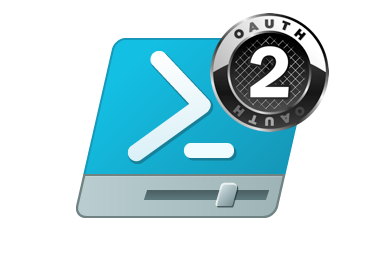One of the advantages of the Azure Resource Management (ARM) deployment model is being able to delegate administration, something we couldn’t do under the Azure Service Management (ASM or RDFE) deployment model (see the previous posts on subscriptions and resource groups). By delegating administrative authority, we can keep the number of subscription admins low and grant access in accordance with the principle of Least Privilege. This post will walk through using Azure role-based access control (RBAC) to achieve all of this.
Azure RBAC Basics
Built-In Roles
There are three general roles that apply to all resource types:
- Owner has full access to the in-scope resources
- Contributor has the same access to in-scope resources as Owner but cannot manage access
- Reader can only view in-scope resources
In addition to these general roles, there are other built-in roles that are resource-specific. Microsoft has a list of those roles, but because Azure is changing regularly it’s best to use PowerShell to query for the roles:
[powershell]
# list all of the RBAC roles in the subscription
(Get-AzureRmRoleDefinition).Name
# see the actions a specific role is allowed to perform
(Get-AzureRmRoleDefinition -Name '<Role Name>').Actions
# see the actions a specific role is *not* allowed to perform
(Get-AzureRmRoleDefinition -Name '<Role Name>').NotActions
[/powershell]
Azure Active Directory (AD) users and groups can be assigned to any Azure RBAC role. The Azure AD tenant to which the subscription belongs is the source tenant for users and groups.
Custom Roles
If you find that the built-in roles aren’t sufficient, you can create custom roles which will be the topic of Part 2.
Resource Hierarchy
There is a hierarchy to containers and resources:
- The subscription is the top-level container that can house resources
- A resource group (RG) can belong to a single subscription (and can’t span subscriptions)
- A resource can belong to a single resource group
Any access granted to a parent container is inherited by all children. For example, an account granted read access at the subscription level can see all resources in the subscription. By the way, there is no concept of denying access in Azure RBAC, so be very careful and deliberate about granting wide-spread access.
ARM/New Portal vs. ASM/Classic Portal/RDFE
Back in the ASM days, to access an Azure subscription one needed to be a subscription admin (or co-admin). Those admins are automatically granted subscription owner access in ARM. However, accounts granted owner access in ARM are not automatically granted subscription co-admin access. If you have resources that you need to manage that are not yet available in ARM you will still need to manage the co-admins list. In either case the recommendation is still the same: keep the number of subscription admins (granted either through Azure RBAC or directly through subscription admins) as low as possible.
Azure RBAC in Practice
Recommendations for a resource group strategy were discussed in a previous post, so I won’t rehash that content. What I do want to talk about is how to implement your strategy.
Creating RGs and Delegating Admin
RGs must be created by an account with subscription owner role. Once the RG is created an RG owner must be assigned to a user who is the actual owner of the RG (owner as in someone who is responsible for the resources that the RG will contain). Once that owner has been established additional roles can be added by the new owner. The advice for RGs is the same as subscriptions: keep the number of owners as low as possible – not everyone who needs access to the RG needs to be an owner of the RG – use Contributor instead.
Managing Roles
To keep the administrative overhead as low as possible, use Azure AD groups to manage role membership. Create a group and add user accounts to the group. If you’re syncing your on-premises AD Domain Services (DS) with Azure AD create the group in AD DS and let it sync to Azure AD. Manage these groups using your existing on-premises user and group management process.
Infrastructure RGs
Contra much of the advice published on the Internet not every service or application should get its own VNet and not every virtual machine (VM) should get its own storage account. VNets and storage accounts for VM disks (VHDs) are infrastructure resources and need to be managed as such.
Network
Create an RG for the VNets and place all the VNets into that RG. Create a group, name it something descriptive like Network Consumers, and grant it the Reader and Virtual Machine Contributor roles to the VNet RG. Any user account in that group will be able to attach VMs to any of the VNets in the VNet RG.
VHD Storage Accounts
Create an RG for the VHD storage accounts and place all the VHD storage accounts into that RG. Create a group, name it something descriptive like Storage Consumers, and grant it the Reader and Virtual Machine Contributor roles to the VHD storage account RG. Any user account in that group will be able to use any of the storage accounts in the RG to store a VM’s VHDs.































